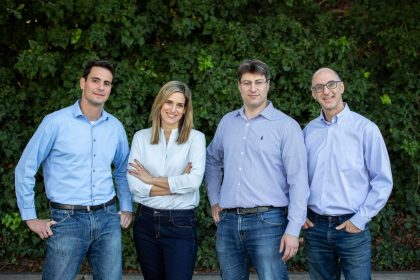In less than two weeks, some of the world’s greatest athletes will gather at the starting line in the Vaires-sur-Marne Nautical Stadium in France. The starter will call competing crews to “attention,” activate the green light, and the horn will sound— announcing the start of the first race for the U.S. women’s rowing team at the 2024 Paris Olympics. Eight of the women making up that team are employees of my company, Broadridge.
The eight rowers are part of Broadridge’s Elite Athlete Management Training Program. We launched the program in 2022. It allows world-class athletes to train at an elite level and continue their professional careers by working for Broadridge on a limited and flexible schedule as they train for their sport. The goal of the program is to support our country’s finest athletes as they prepare and compete, while simultaneously providing the athletes with hands-on, meaningful work experience and career development opportunities.
The program is good for the athletes, good for the country and, yes, good for Broadridge. When the athletes in the Elite Athlete Management Training Program retire from competition, we believe they will have similar achievements in business with Broadridge over long and successful careers.
These women are not just elite athletes. They are also incredible young professionals who would make any potential employer delighted to have them. Their commitment and motivation are astounding. They train two to three times per day, six days a week, and work Monday through Friday. On-the-water training starts at 7 a.m. Following a two-hour session (and a second breakfast), work hours typically start around 11 a.m. and end at 3 p.m. Then comes the second training session of the day, on the ergometer or bike, often followed by a trip to the weight room.
They are also the ultimate team players. It doesn’t take any knowledge of rowing to understand that teamwork is what wins. I often talk about how success in business is not only about “rowing in the same direction” but about doing that and not “splashing each other in the face” along the way. Just watch a single race and you’ll be captivated by the perfect synchronization of these world-class athletes, each giving maximum effort. Not a splash in the air. This ability to cooperate sets these women apart from many young workers, who have been competing so hard to get into the right school and excel that they haven’t developed any ethos of collaboration.
And these women are smart and accomplished. Their resumes already include careers in finance, like Molly Reckford (Dartmouth and Citigroup), master of business administration graduates like Michelle Sechser (University of Tulsa), technologists like Emily Kallfelz (Princeton), and degrees holders from top universities, like Azja Czajkowski (Stanford), Regina Salmons (University of Pennsylvania), Jessica Thoennes (University of Washington) and Charlotte Buck (Columbia).
Courting Performance
When they retire from their sport, these women will be courted by companies hungry for this level of performance. The shortage of talent and the difficulty acquiring needed skills have emerged as primary challenges facing companies across industries today.
That competition for talent motivated Broadridge to create the Elite Athlete Management Training Program. Although we are quite proud of this high-profile program, it is only one part of a much broader strategy the company implemented to create a pipeline of talent. This strategy is based on an important insight: In today’s hyper-competitive global marketplace, to attract great employees, companies must do great things. That means thinking outside of the box to find ways to identify pools of talent, connect to top recruits and entice them to choose your company over other options.
For example, we recognized that, like the pool of elite athletes, military veterans often possess characteristics like teamwork, problem-solving and discipline that make them attractive as employees. So we created the Veteran + First Responder Network, which directs the same type of recruitment, mentorship and career-development resources used in the Elite Athlete Management Training Program toward veterans and first responders. Likewise, our Disability Equity Associate Network aims to eliminate barriers and help us recruit and retain talented employees with disabilities.
Broadridge is far from alone. In fact, most companies have realized that meeting talent needs will require new and creative approaches that improve access to qualified candidates and increase their value as potential employers. For example, IBM and other leading companies have launched highly successful “returnship” initiatives aimed at helping women who take time off from work to raise children reenter the workplace and thrive professionally. More broadly, companies across the United States and around the world continue to offer work-from-home options, hybrid schedules and other flexible work arrangements designed to accommodate employees’ needs and schedules and make careers more enjoyable and rewarding.
These companies understand that it’s no longer enough to offer an attractive salary and benefits. To win today’s war for talent, companies must commit to something bigger that makes them an attractive destination for the best and the brightest—like the women who will be rowing for the United States in Vaires-sur-Marne Nautical Stadium this month. Let’s all rally around these women to cheer them on and support them, during their races and throughout their professional careers.
Read the full article here





